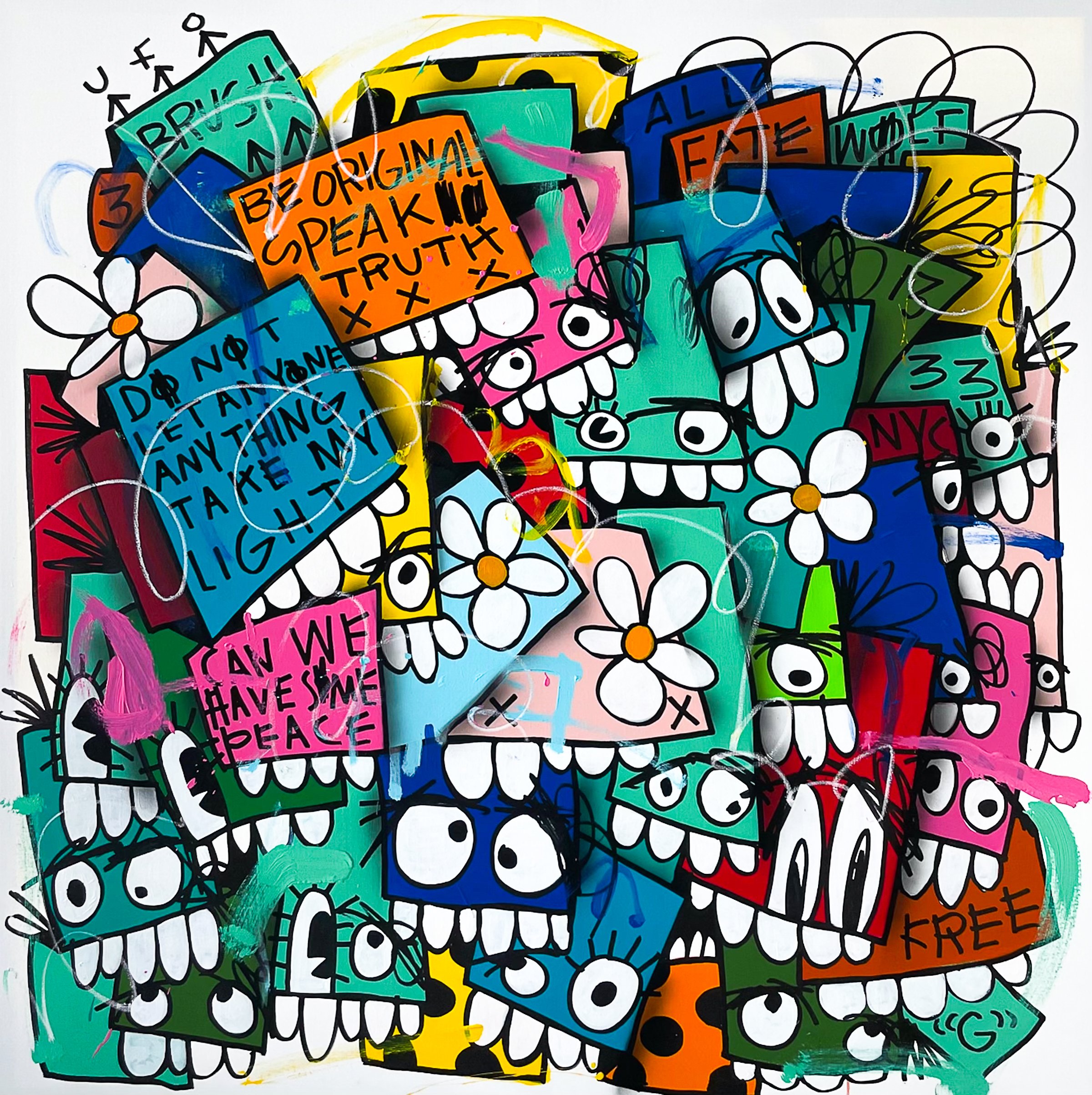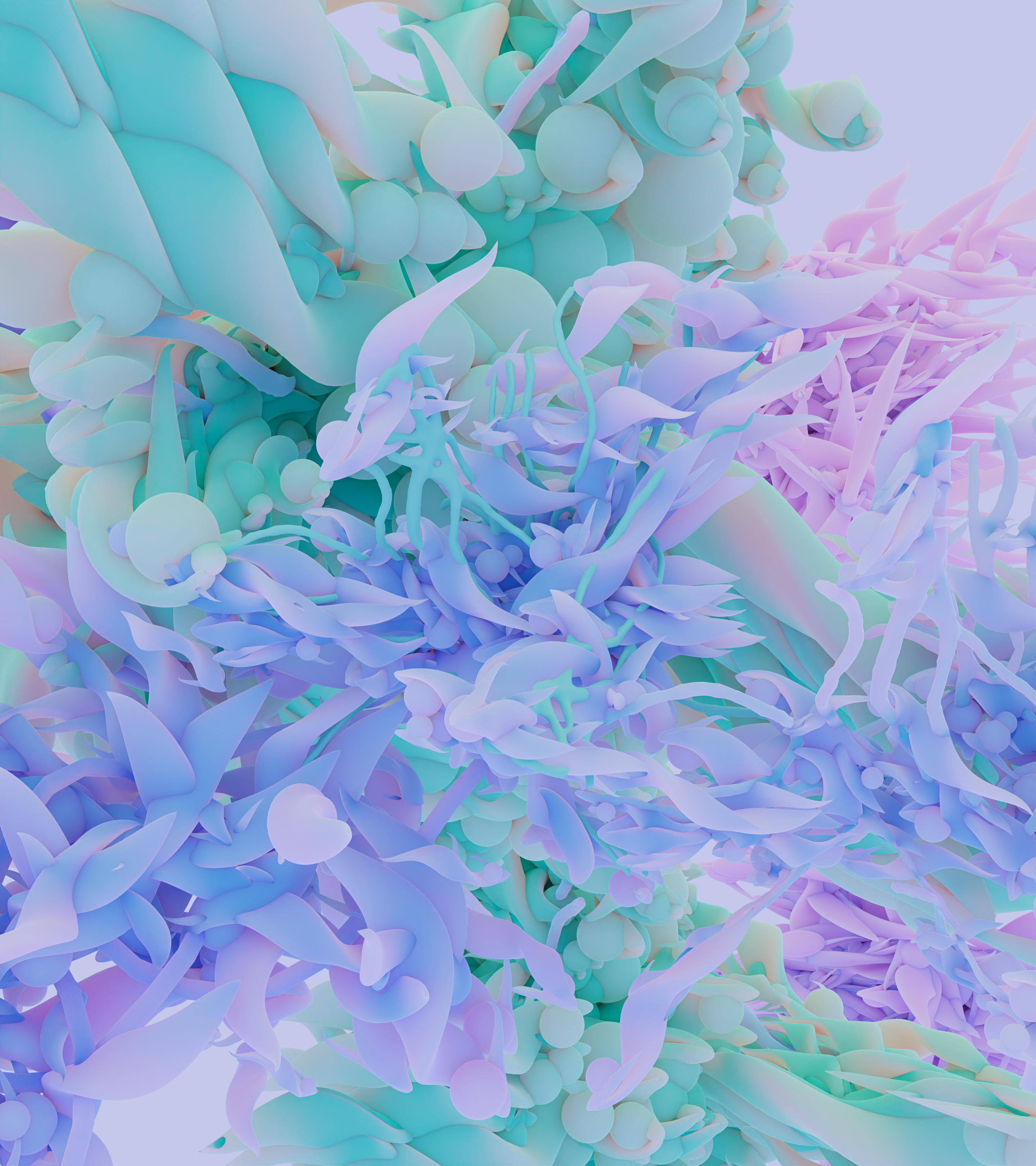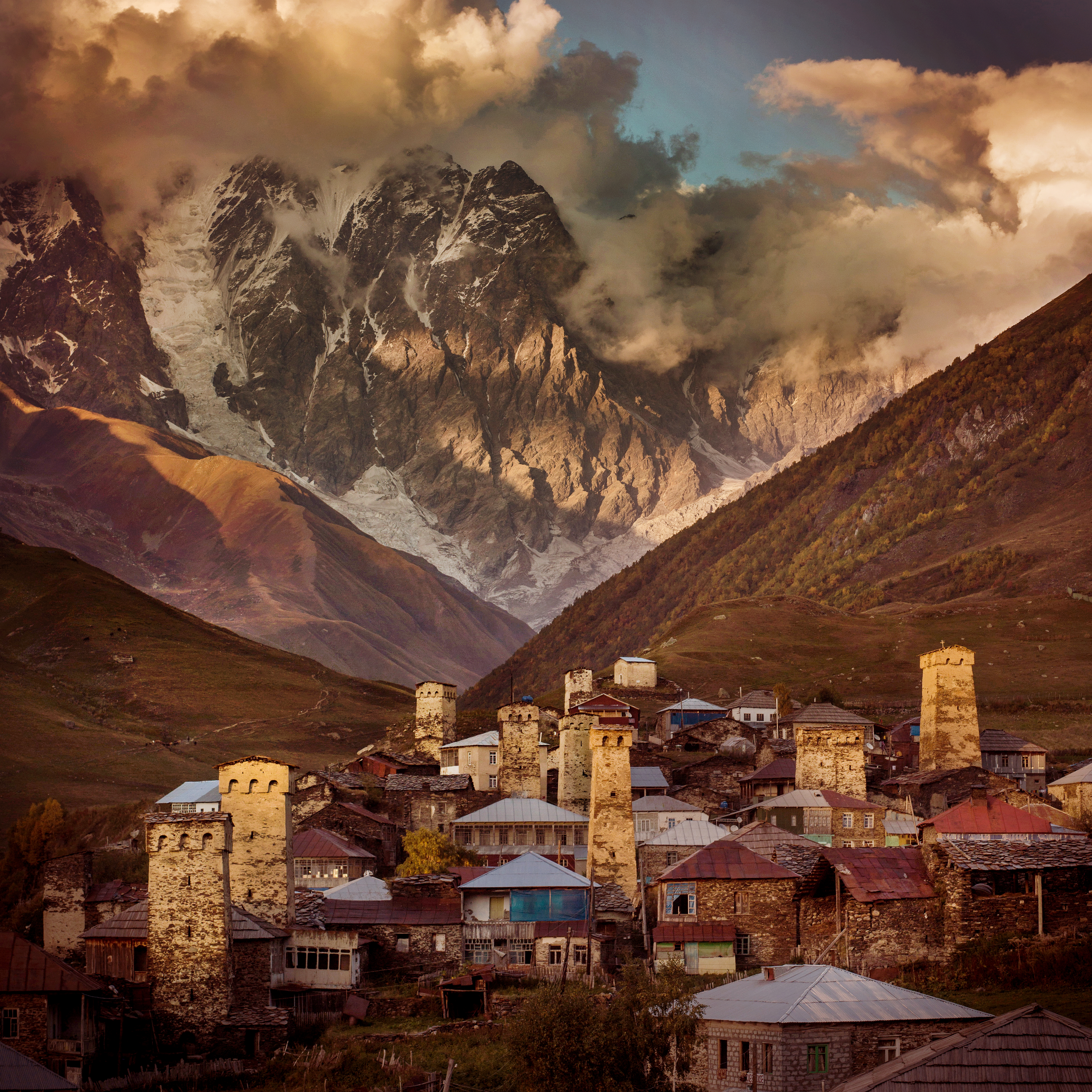AN INTERVIEW WITH CONNOR SENAY
With a flagship gallery in Los Angeles and permanent art curations in Nobu Hotel Miami Beach, Eden Roc Hotel Miami Beach, and Catch Restaurant Los Angeles, Art Angels was founded in 2013 by Jacquelin Napal and Kat Emery. Exhibiting a selection of both established and emerging artists, Art Angels offer an eclectic mix for their clientele as a growing number of innovative artists join the Art Angels family. Over the past few months, Art Angels has been steadily building its web3 offering. Connor Senay, Art Angels’ web3 coordinator, talks to Linda Dounia about the gallery’s expansion into the blockchain, what motivated it, and how their SuperRare Space fits in.
 "Heading Downtown" by Flore on SuperRare. Presented by Art Angels.
"Heading Downtown" by Flore on SuperRare. Presented by Art Angels.
Linda Dounia: Art Angels is an established gallery in the traditional art world. I am curious about what your transition into web3 has meant for you.
Connor Senay: Web3 is a new frontier and it's been a lot of trial and error for us, but I think our growth has been consistent because of our approach to working with artists. In web3, artists don't really necessarily need a third party to promote them. But of course, as a physical gallery, we have experience representing and building a platform for artists to express themselves. That’s the experience we’re bringing to web3.
We work with artists who don't necessarily have massive followings on Twitter, and are not yet household names in web3 who drop a body of work and sell out within 24 hours. We're trying to basically leverage our experience and build an audience for them. Use social media to show what they have to offer, organize conversations on Twitter where they can dig into their practice. It’s also been a great experience connecting with artists from the traditional art world interested in web3, and shepherding them into the space. Finding smart ways to apply what they've done in the past to NFTs. For example, Nick Veezy, an artist we’ve worked with, creates X-ray images and makes them available as printed editions of 25. They're all digitally rendered first and then printed. So NFTs were the perfect vehicle for his work and give people a new, more native way to enjoy his work. NFTs are also a vehicle for him to connect with a new collector base.
We love this space and what we think is important for us to bridge the gap between the physical and the digital. Building bridges so that our digital collectors better understand our traditional artists and our physical collectors better understand our digital artists. We also think it’s our responsibility to leverage the technical capabilities of web3, royalties and provenance for example. The way we show up in web3 stays true to our ethos as a physical gallery. Our team is willing to innovate, expand, and grow our approach to curation to ensure we are representing artists in a wholesome way.
LD: How did the decision to enter the Space Race come about? How do you feel it’s helped you further your work in web3? What was that? How did that decision come about? And what was the experience?
CS: Back in February of 2022, Paloma invited us to her first curated show for SuperRare, which was exhibited at the Tommie Hollywood Hotel in LA. Sarah and I were the only team members at the time helping with web3 curation. We both attended the event, which was a success, so we decided to reach out to Paloma. We invited her to the Art Angels gallery to talk about synergies with SuperRare and curation on both the physical and digital sides. She came in a couple of weeks later and we had a great conversation, and started ideating on how we could work together. The Space Race was announced around that time, so Paloma and David helped us figure out how we could best use our vision to enter the Space Race. It was a really exciting process for us. We knew that having a Space would be important for expanding our audience in web3, signal that we are invested in the space, and show what we hope to contribute to it as a female-founded physical gallery.
 "Super Rare Human" by Flore on SuperRare. Presented by Art Angels.
"Super Rare Human" by Flore on SuperRare. Presented by Art Angels.
LD: I am curious about how you managed the process of gathering votes during the Space Race? Was that challenging for you coming from the traditional art world?
CS: Twitter Outreach was a big one for us. We had already had a web3 exhibition prior to running for the Space Race, so we had already started getting a lot of traction on social media. We doubled down on that. We were also lucky to have curators, collectors, and friends in our network who were already involved in web3. They helped us increase our reach and gathered some votes for us. So the rest came down to using Twitter effectively to connect with holders of $RARE, share our vision with them, and also show them the value we plan to bring in the future.
LD: Beyond the Space Race, what does community building around your Space look like for you?
CS: For a while, we leveraged Twitter Spaces, organizing them when we have exhibitions and otherwise joining other spaces to share our work with the broader community. We weren’t yet well known then, so over time, we built a steady following doing that. We also generally promote our physical exhibitions on socials to invite the web3 community to our space in LA. We’ve also connected to other web3 communities in LA, like NFTuesday – we try to attend every Tuesday to connect with more artists, and then usually post about them on Twitter afterwards. Just about the most important thing that I felt like I learned from it. Moving forward, we want to start hosting our own talks and events, a little less formal and intense than an exhibition at the gallery, because we have such a beautiful space and a big digital canvas (6 x 6 ft) on one of our walls.
LD: You have mentioned being excited about accompanying artists who are interested in web3 and onboarding them into the space. What does that look like for you? What kind of support do you find yourself giving?
CS: We have definitely connected with artists who are very curious about web3 and share with us their ideas of what they might do. They come to us with questions like what is the best way for them to go about joining and how they can plan releases, which we are happy to assist them with. There are also artists we’ve worked with in the past and who, given their practice, we feel would naturally do very well in web3. So we try to work with them on an advisory and partnership basis to plan drops and exhibitions.
Nick Veezy, who I spoke about earlier, is one of them. There is also Michael Kallis, a physical painter, who creates these beautiful mid-century modern architectural pieces on canvas, with intricate detail. All of his pieces are digital and are often rendered in different color schemes. His SuperRare genesis was collected by 33 Gallery, and it was a video blending two or three of his rendered paintings meshed together. So it really depends on who the artist is, how they create, and the intentions behind it.
Michael is very intent on growing in both the traditional art world and web3, so we are well placed to help him reach his goals. He has a lot of innovative ideas that will be coming over the next few weeks. I am excited about those and I want to make sure we keep sharing about it to give context to potential collectors. There are not many people who can collect a one of one physical piece for five figures, but there are plenty who might want to acquire an interactive art experience at a fraction of the cost.
 "Pink Noise" by David Uessem on SuperRare. Presented by Art Angels.
"Pink Noise" by David Uessem on SuperRare. Presented by Art Angels.
LD: I've spoken with different SuperRare Space Operators about how they approach onboarding artists, and it seems that there is a spectrum in terms of volume. For example, MONOLITH has a fairly conservative approach and onboards a few artists at a time to make sure there is cohesion in their community. On the other hand, there’s Artifact, who gets about 10 applications a day to integrate into the platform and have a voting system to rank these applications on a leaderboard where they select from. I wonder where you feel Art Angels falls on that spectrum?
CS: I would say we are somewhere in the middle at the moment, but that might change in the future. Our team is very small. We have an established presence in the traditional art world, but we are still building our presence in web3. To select artists we work with for example, I usually spend a lot of time perusing Twitter, looking at a selection of artists. I try to investigate where they might be in their journeys and the kind of support we might be able to provide them. Then I'll sit down with the head curation team (which is the two owners of Art Angels, Jacqueline and Kat), to talk through curation ideas and artists who might make sense for us. Once a concept is approved and we know the artists we want to work with, I will then reach out to them directly, usually on Twitter, and ask them if they want to be involved. I also keep a channel of communication open with them in case artists themselves have ideas for works they’d like to present with us.
LD: You're basically onboarding based on curatorial concepts which allows you to keep the integrity of your ethos.
CS: Exactly. It works for us. We are not yet as streamlined in terms of organization as I’d like us to be, so that’s one of my main goals for our Space this year. We want to be able to put out more regular curations, involve artists we've had for past curations, and make sure we are keeping a pulse of the web3 community to discover more artists.
LD: As a physical gallery who’s made the leap into web3, I was also wondering what advice you might have for similar organizations looking to get involved as you did.
CS: I would say having a very active Twitter presence is very important. Tweeting three to four times a day and following the community’s cues online, like the GM tweet for example. Whether it's a GM with a piece of art or just a GM, it’s a great way to meet people in the space. Another thing is also hosting Twitter spaces every so often, especially around exhibitions and releases to give artists you’re working with a chance to have a platform. Then it’s about engaging with people one on one, reaching out if they express interest and building relationships. Beyond that, it’s about being in touch with the space and learning what makes people tick. I think attending web3 events in your area can be a great way to do that and deepen relationships.
 "Care Bears" by Floyd Strickland on SuperRare. Presented by Art Angels.
"Care Bears" by Floyd Strickland on SuperRare. Presented by Art Angels.
LD: Speaking of relationships, how do you approach connecting with collectors in web3?
CS: When I highlight a particular artist online, I observe who interacts with that content. I'll then reach out to them, especially the ones that comment and show love in certain ways, and inquire what it is about the piece that makes them and whether they're interested in collecting or knowing more about the artist in general. As a gallery, we want to sell works to collectors that really value them, but it’s also about making connections in the first place and not being too eager to sell. We’re in a bear market at the moment; it’s harder to move pieces. So we are careful about how we promote, how much we promote, and really strive to be targeted in how we communicate with collectors. We also don’t want our relationships with them to be one-sided. We often think about how we can help them, whether that’s highlighting their acquisitions, cross-promoting with them, or advising them about artists when they request information.
LD: What about your relationship with artists? How do you ensure the ones you work with have a good experience?
CS: I try to check in with them at least once every two weeks, just to see how everything's going, what they're working on, and if there's anything that we can do to help on our end. Sometimes, artists need to isolate themselves when working on their projects, so you don’t necessarily know how they’re feeling or how their process is going. So I always want to check in at a fairly regular cadence just to make sure everything is moving smoothly and whether I can assist in any way.
LD: What are some of the most common things you assist artists with? What questions do you answer for them?
CS: So, I think spaces are all about community. As cliche as that might sound, I think community is a really complex concept. I think it goes beyond just having a base of collectors because in order to grow that base, you need to make sure that you've established ways to connect with people. In web3, that mostly happens on social media, and Twitter specifically. And then it’s about how you can be the most helpful as a gallery to build context around releases, making sure you’re sharing meaningfully about artists and exhibitions. Building community is also about creating an environment where the artists you work with feel comfortable and free to create their best work. So I think community is the most important aspect to focus on as a Space Operator, building a following that understands your goals in web3 and can help you achieve. That occurs via connecting with everyone promoting effectively.
Click here to view the Art Angels Space.




